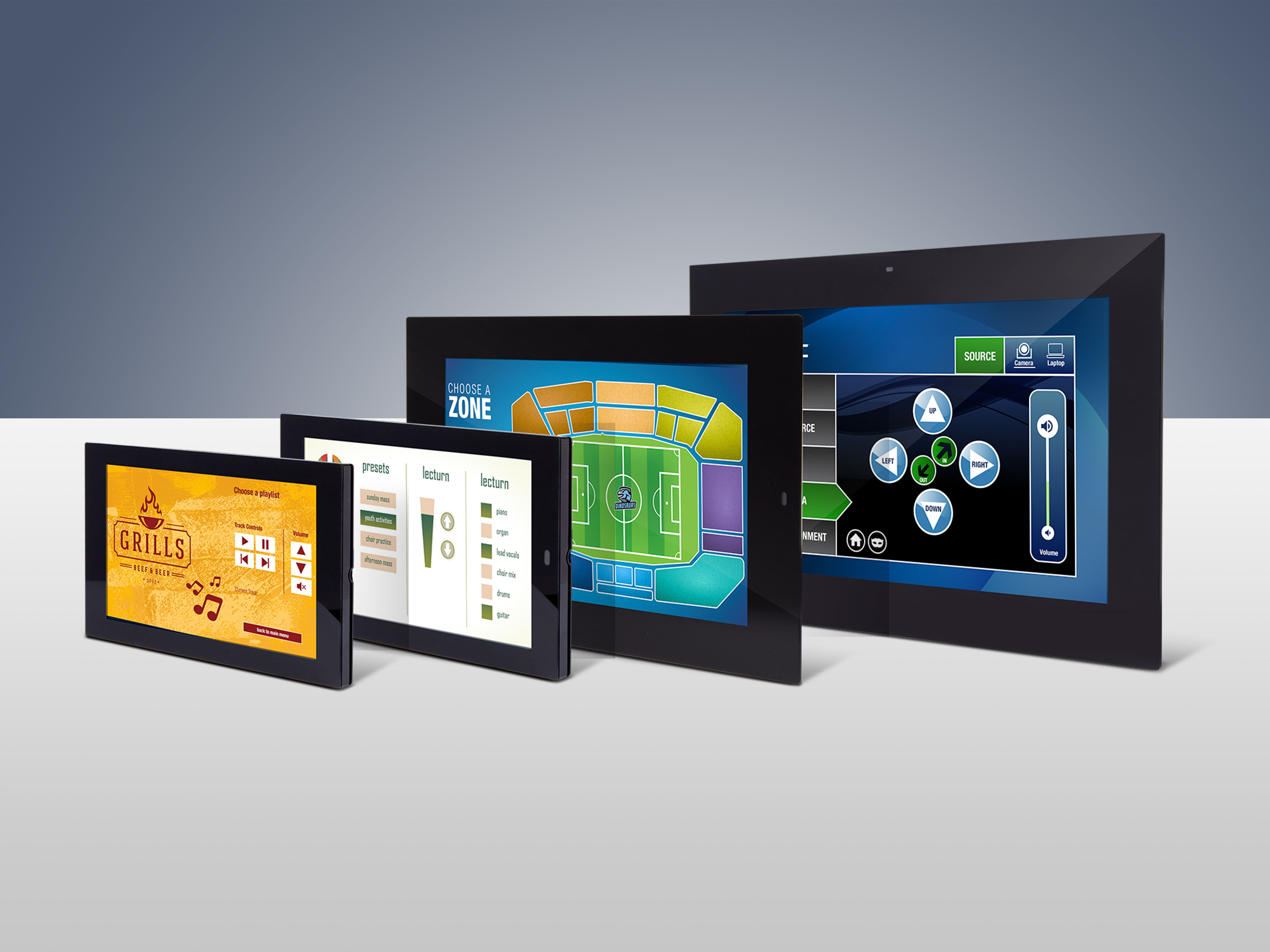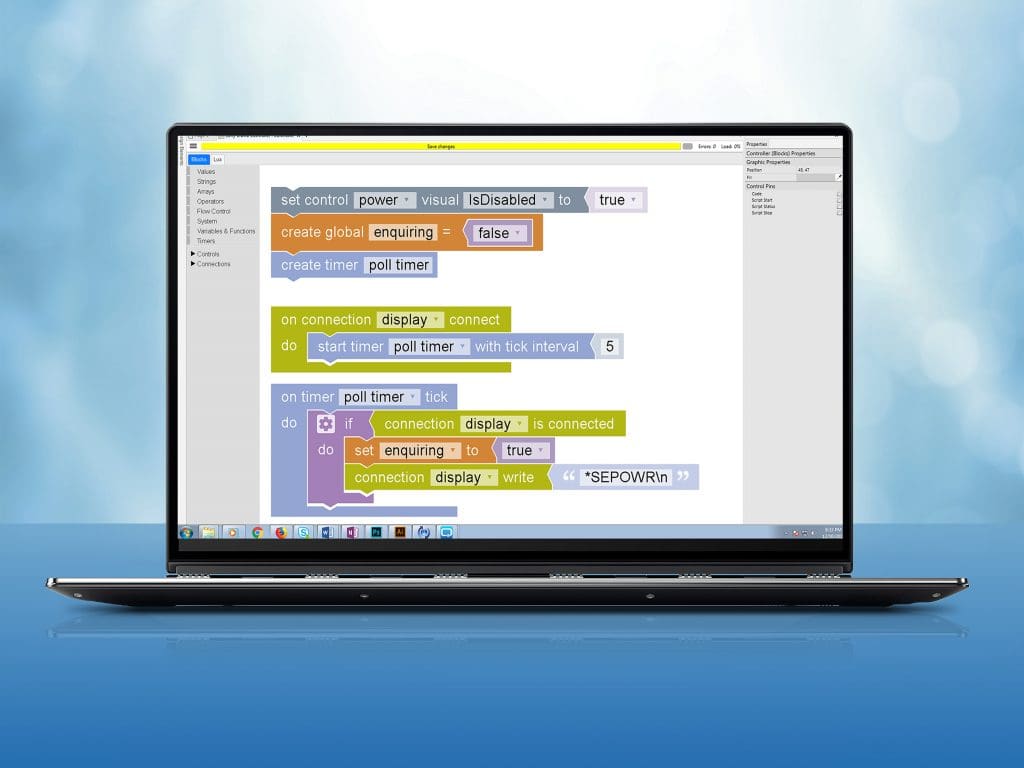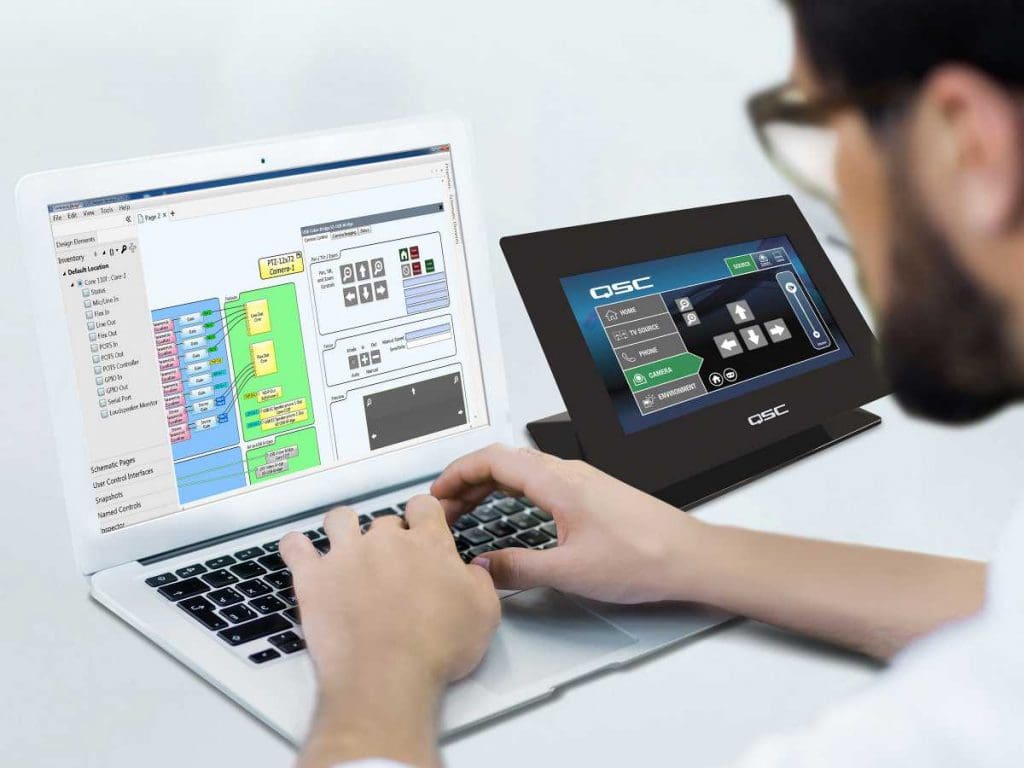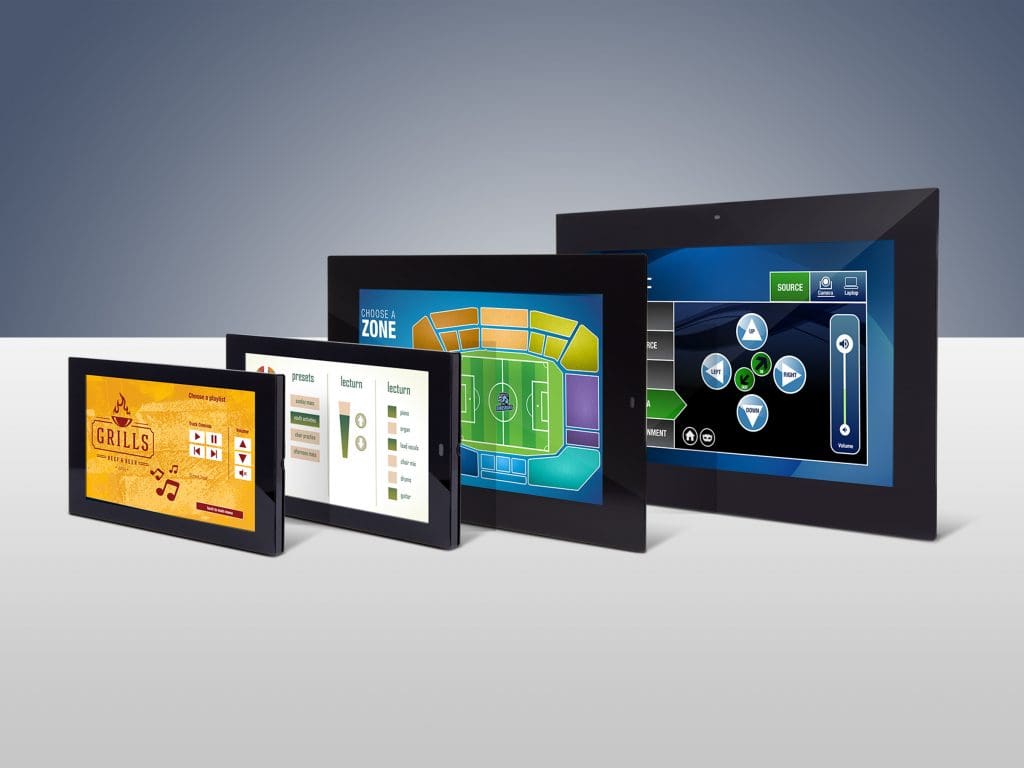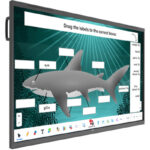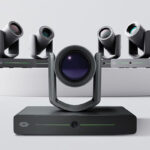QSC Q-SYS is an audio, video and control platform, and the control portion is getting a big boost, much of which will be on display at ISE 2018. In advance of the show in Amsterdam, QSC announces Q-SYS Reflect control monitoring and management technology. Meanwhile, it will demonstrate Q-SYS Control software feature licensing, drag-and-drop visual programming and native touch screen controllers at ISE 2018.
The manufacturer, which positions its Q-SYS platform as being extremely IT-friendly, sees an opportunity to fill perceived voids in the automation landscape and address them with expanded Q-SYS Control features.
“I think there are a lot of great products on the market,” says Greg Mattson, QSC product manager for installed systems, adding that he has a lot of professional experience with a variety of automation manufacturers. “But I think we can do better. Long term, we think the concept of individual silo products is dying and we want to address that with a complete platform perspective.”
As such, audio, video and control platform QSC Q-SYS aims to provide system designers and customers with an end-to-end solution designed to work together. “Our industry talks about open standards as a way to interconnect these different products and we want to make sure we’re adopting these standards and levering them to the fullest, because it can be difficult to build cohesive systems if they’re not built to work together,” he says.
QSC’s goal with Q-SYS control is three-pronged, according to Mattson. “We want it to be well integrated. We want it to be simplified and we want it to be scalable.”
Here’s a look at what QSC Q-SYS Control is adding:
Q-SYS Reflect
Q-SYS Reflect, a technology announcement QSC is making in advance of ISE 2017, is a powerful, simple-to-use monitoring and management platform built using modern web technologies for local and remote management of Q-SYS systems.
According to Mattson, Q-SYS Reflect is “an entirely new software platform intended to modernize the way customers interact with Q-SYS.”
It includes Q-SYS Reflect Enterprise Manager, which simplifies the management of multiple Q-SYS systems and is architected to evolve with the changing needs of the IT/AV integrator, programmer, administrator and end user.
According to Mattson, Q-SYS Reflect is “an entirely new software platform intended to modernize the way customers interact with Q-SYS.”
It’s a management and monitoring platform. “Companies with multiple Q-SYS systems can easily review, configure each of their systems through a single web interface irrespective of their physical location, all benefiting from the latest in modern, secure computing and network technology.”
More on Q-SYS Reflect from QSC’s press release:
Addressing the fundamental need for IT/AV system administrators to easily monitor and manage their AV systems, Q-SYS Reflect is a new management platform for the Q-SYS eco-system, which will launch with two different versions. Q-SYS Reflect Core Manager runs natively on the Q-SYS Core processor and provides a more modern and secure interface for common, IT related tasks on the Q-SYS hardware.
Q-SYS Reflect Enterprise Manager extends that web platform to the cloud and provides a hosted solution to monitor and manage multiple Q-SYS systems including Core processors and peripherals.
Regardless of whether AV assets are distributed within a single building or across an entire global enterprise, Q-SYS Reflect delivers valuable real-time data and insights for monitoring, diagnostics and troubleshooting.
“We recognize that our customers want to avoid bloated management systems that require extraneous setup and deployment complexities, and will not settle for rough bolt-on AV modifications to existing building asset managers,” says Martin Barbour, Product Manager for Installed Systems, QSC. “Q-SYS Reflect will address those needs by providing streamlined setup and configuration with security and manageability at the forefront of the user experience.”
QSC will initially offer Q-SYS Reflect Enterprise Manager as a hosted cloud-based solution. In future product details and feature updates, QSC will include an on-premise version as well as a robust API, which will allow users to connect and integrate Q-SYS Reflect with other enterprise management applications and dashboards as desired.
Barbour adds, “When this technology reaches its fullest stage of maturity, it will be the first platform of its kind to deliver a holistic, global view of Q-SYS systems in a format that IT professionals have come to expect from their IT infrastructure.”
UCI and Custom Scripting Deployment with Flexible Software Feature Licensing
It’s not unique that QSC is claiming that its automation platform, Q-SYS Control, offers simple operation for end users, one-touch control and intelligent spaces. Where Q-SYS Control sets itself apart, according to Mattson, is in simplified control not just for end users but for AV programmers, installers and IT professionals supporting the system.
Where Q-SYS Control sets itself apart, according to Mattson, is in simplified control not just for end users but for AV programmers, installers and IT professionals supporting the system.
Q-SYS Control is “simple to install, [to] get into your infrastructure, and support,” he says. “Our platform is built on IT-friendly standards leveraging the power of Intel processors, the Linux operating system, and IEEE standards. This means it fits into your existing infrastructure, and once it’s in it’s designed to be accessible.”
It was important to QSC, Mattson adds, for Q-SYS Control to be “user friendly” to all stakeholders and to be easy to monitor from anywhere.
“Our programming environment uses a combination of drag-and-drop program elements, especially utilized for creating the UCIs, as well as a modern scripting language, a scripting engine that enhances our ability for control. This scripting engine is the backbone for our third-party plug-ins and enables our users to create custom scripts primarily using Lua. No proprietary languages on the Q-SYS platform.”
More on UCI and Custom Scripting Deployment from QSC’s press release:
The Q-SYS UCI Editor is an easy to use, drag-and-drop design tool that allows users to create custom, robust UCIs for native Q-SYS touch screen controllers, all without the need for any previous programming experience. This streamlined design tool dramatically improves efficiency in the traditional AV control design and commissioning workflow.
For installations that require more complex control integration, the Q-SYS Scripting Engine allows control plug-ins and scripts to easily integrate third-party devices with the Q-SYS Platform. It also provides the backbone for new Controller components that allow users to create custom scripts using modern, accessible scripting languages including Lua, an open-source, IT friendly programming language.
During AV system design development and testing, the full functionality of the Q-SYS Designer Software, including the Q-SYS UCI Editor and the Q-SYS Scripting Engine, are included at no cost while running in “emulation mode”. When it comes time to deploy a system design to the
Q-SYS Core processor, users can selectively and securely enable control-related features as needed on their Q-SYS Core processors using new node-locked, perpetual software licenses.
Drag-and-Drop Visual Code Editor
There is room for improvement when it comes to the traditional approach to automation system programming, according to QSC.
Mattson describes a traditional hardware-based control scenario with a control processor, audio processor, a few video cameras, video switching, some control points, touchscreen, amps and speakers that seems inefficient and short-sighted.
“If I want to add that camera to my project I can add it without any additional programming,” says QSC’s Mattson.
“The control programmer needs to program every single bit of integration, making it so that the control processor can talk to the audio processor,” he says. “The audio processor needs to be able to report back to the control processor. The control surface needs to query the control processor to get button feedback, amplifier status. It can be quite a mess to manage, leaving a large potential for error.”
In the new Q-SYS Control, meanwhile, it’s more streamlined. “All those devices report directly to the Core via standard IT network and all those pieces are native,” Mattson says. “And when we start to tie in third-party device control we have a robust plug-and-play framework that allows deeper integrations.”
A big challenge with traditional automation programming, according to Mattson, is how difficult it can be to react to a change on the fly. He says it’s easier for Q-SYS Control and offers an example.
“I built a conference room. I have Q-SYS in my meeting space and on my touchscreen I have some source selections and some environmental controls. I have a dialer, but for some reason I left out a camera and have since realized the error of my ways. So if I want to add that camera to my project I can add it without any additional programming. A little drag-and-drop, a quick push to the system, and I’ve added camera controls to my project with no programming required.”
More on Drag-and-Drop Visual Code Editor from QSC’s press release:
For the novice programmer or IT professional just getting started with AV programming, or the seasoned AV professional doing rapid prototyping, the new Q-SYS Block Controller component leverages the power of the Q-SYS Scripting Engine and includes a state-of-the-art visual programming tool that brings modern software design paradigms to the AV programming industry.
Based on technology initially developed by Google and MIT and currently deployed commercially in dozens of products and platforms, this open source visual programming tool uses interlocking, graphical blocks to represent common code programming concepts including logical expressions, loops and more. This approach to simple and rapid code creation and editing allows for the composition of simple or sophisticated AV scripts while ensuring that the generated code is always syntactically correct.
New TSC-G2 Series Touch Screen Controllers
QSC caps off its enhancements to Q-SYS Control by introducing at ISE 2018 new capacitive PoE LCD touch screens. The company says the new line, which is native to the Q-SYS platform, is equipped with IPS technology for incredible off-axis viewing, and require no dedicated control hardware to operate.
TSC-G2 Series is available in four new sizes – 4.7-inch, 5.5-inch, 8.0-inch and 11.6-inch – and offer wall mount options and table top stand accessories.
Most of the Q-SYS Control features, including the TSC-G2 Series Touch Screen Controllers, will be on display at ISE 2018 at stand 7-E200 (Q-SYS Reflect will not be demonstrated at ISE 2018), and visitors can get a hands-on demo.
With Q-SYS Control, QSC expects to disrupt the automation landscape and senior VP Markus Winkler says it is in a position to do so.
“The Q-SYS Control expansion is a testament to development principles of the Q-SYS Platform, which is keeping a firm technology alignment with the IT industry and focus on software-based functionality advances,” Winkler says.
“We have used software within Q-SYS to introduce AEC processing, conference room video camera switching, and the industry’s first real-time AV&C software deployment on commercial off-the-shelf IT hardware. Software-based control is the ideal next step in offering the most flexible and scalable IT/AV platform on the market.”

